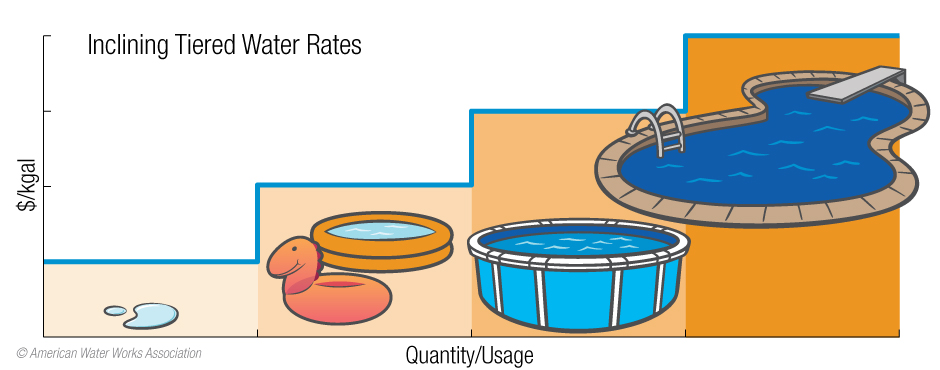Water rates are unique to each water system and are carefully designed to meet the water supply and costs of the system. With that in mind, the kinds of rates a system uses can vary from non-metered (flat) rates, to seasonal rates, to tiered rates that may rise or fall depending on how much water is consumed. A diagram of how tiered rates work is below.
In addition, many water providers factor a "base rate" fee into their rate calculations. A base rate fee helps ensure baseline expenses are met, whether or not a customer uses any water. After all, even if no water is used, the water provider still must pay for water supplies, storage, distribution, maintenance, administration, etc. This base rate fee covers the minimum costs of water system maintenance and safeguards the smooth operation of the system, regardless of how much — or how little — water is consumed.
Additionally, utilities almost always carve out different rate structures for commercial and residential users, as well as rates based on geography (especially if a specific locality proves particularly expensive to service). Rates also vary by the size of the “tap” or size of the water pipe, where residential is normally about three quarters (3/4) of an inch in size. Seasonal rate variations are common, but during periods of drought, more radical short-term rate increases and/or conservation incentives may well kick in.
Although tier-based plans vary, most feature pricing that increases in steps (or blocks) of water-usage volumes. Typically, the first tier — the lowest rate — provides a household with ample water for indoor use such as drinking, cooking, toilets and the like. Then, as the water use increases, the price for water goes to the next tier or block. So the family pays more per gallon for watering the lawn and such, and still higher rates at the consumption levels needed to sustain extensive irrigation, fill swimming pools, etc. The household is then able to exercise some control over its water bill based on its water use habits. While often effective, some states have made tiered water rates illegal, and they are not universally used.
